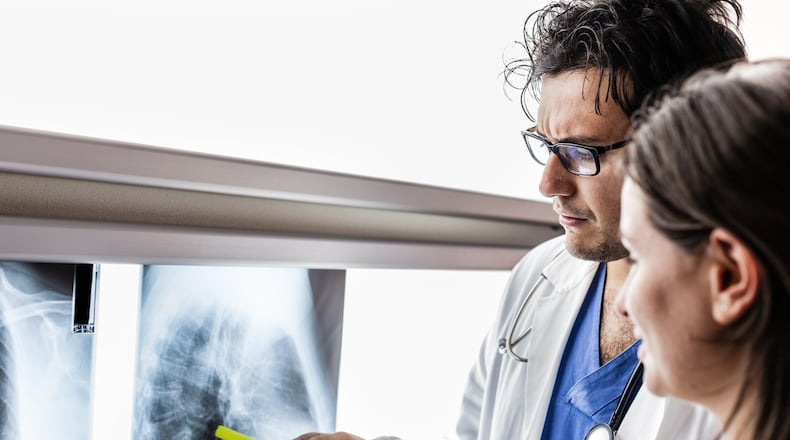LDCT produces cross-sectional images of the entire chest, including the lungs, using special x-ray equipment and sophisticated computers. These images enable doctors to detect very small growths in the lung.
What are the benefits of screenings? The biggest benefit is that it can find lung cancer in its beginning stages, which helps lower the risk of dying from the disease. Early diagnosis also means that doctors can often use minimally invasive surgery to remove the cancer and preserve more lung tissue.
Other benefits of LDCT include:
• It’s fast, painless and noninvasive.
• It uses much less radiation than a traditional CT scan of the chest.
Should you get tested?
Anyone at high risk for lung cancer should get an annual LDCT lung cancer screening, according to the U.S. Preventive Services Task Force. You may qualify if either category applies to you.
Age 50 and older:
• A 20 pack-year history and one of the following:
o Exposure to radon, asbestos, silica or other cancer-causing substance
o Personal history of lymphoma or a smoking-related cancer such as head and neck, bladder or colon cancer
o Family history of lung cancer
o COPD or pulmonary fibrosis
Age 55-74:
• A 30 pack-year history and one of the following:
o In good health – no signs or symptoms of lung disease
o Smoke now, or quit smoking within the last 15 years
o No personal history of lung cancer
How much smoking equals 20 pack-years?
• 1 pack per day for 20 years
• ½ pack per day for 40 years
• 2 packs per day for 10 years
How much smoking equals 30 pack-years?
• 1 pack per day for 30 years
• ½ pack per day for 60 years
• 2 packs per day for 15 years
If you think you are at high risk for lung cancer, ask your doctor about getting screened.
If you still smoke, it’s never too late to quit. Public Health — Dayton & Montgomery County is partnering with Kettering Health Network to offer Clinical Best Practice Smoking Cessation, modeled after the Mayo Clinic’s program. These free five-week sessions will take you through the quitting process.
To sign up for a smoking cessation class or ask a question, call 937-558-3988.
Kettering Health Network is a faith-based, not-for-profit healthcare system. The network has eight hospitals: Grandview, Kettering, Sycamore, Southview, Greene Memorial, Fort Hamilton, Kettering Behavioral Health and Soin.
About the Author
